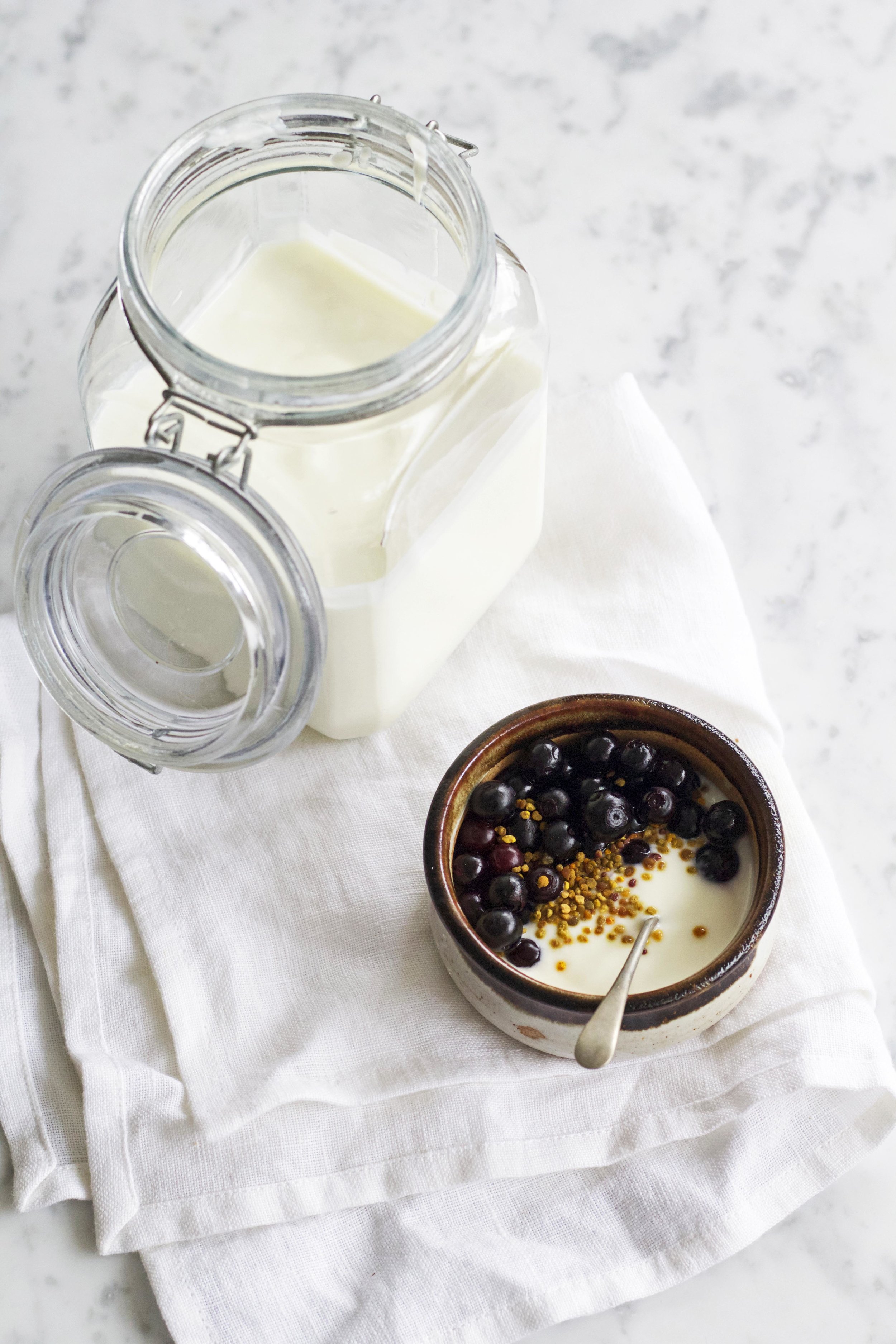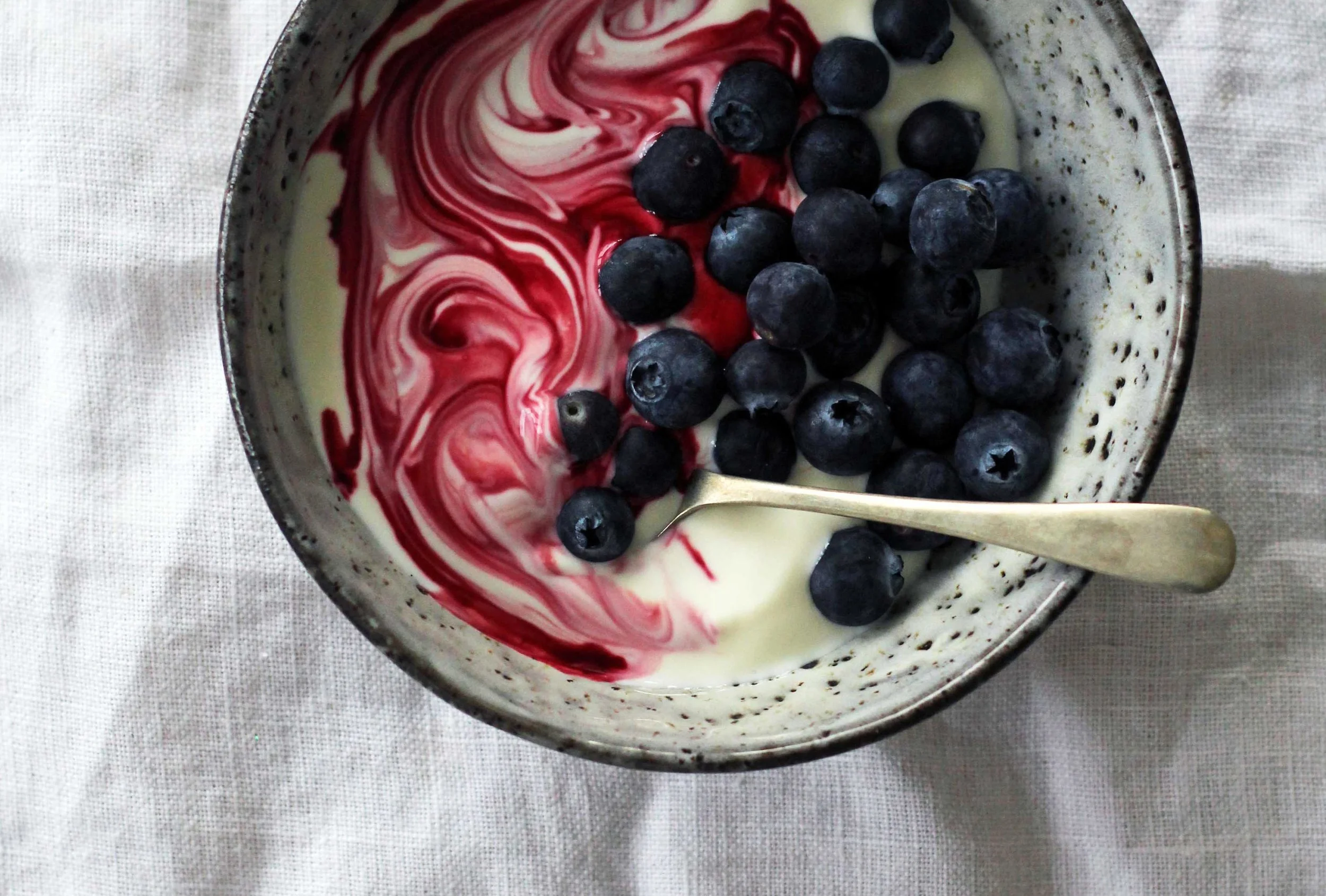Homemade yoghurt - SO easy!

I've excited to share my favourite kitchen staples in the coming weeks. These are the things that form the foundation of my kitchen, providing our everyday nourishment. I always make my own: ghee, yoghurt, sauerkraut, nut butter, mayonnaise and bone broth. While It's impossible for most people to make absolutely everything from scratch, you'll find adding even just a couple of these into your regular cooking routine will be really economical and incredibly satisfying. With a little practice, preparing these items will feel like second nature and you'll be high-fiving yourself for being so clever!
There are many reasons to embrace making your own yoghurt. It’s so simple. And cheap. And most importantly, you’ll know the good (gut-loving) bacteria are still present because it’s so fresh. A cheap milk thermometer from a kitchen store, such as a home barista would use (like THIS), will make it easy to tell when the milk reaches the right temperature. I make my yoghurt in the evening and by the morning it’s all ready.
Homemade yoghurt
Makes 600ml
600mls full-fat dairy milk (I prefer to use organic)
2 rounded tablespoons of yoghurt from a previous batch of homemade yoghurt or store-bought yoghurt with live cultures (check the label to ensure live cultures are present)
Place the milk in a medium saucepan over a high heat. Bring up to 90 degrees celsius (195f). I use an inexpensive milk thermometer for this. Remove from the heat and wait (about 10 minutes) until the milk temperature has dropped to 40c (105f). Whisk in the yoghurt. Pour into a large glass jar. Wrap in a towel and place in the hot water cupboard overnight. Alternatively use a yoghurt maker to keep the yoghurt warm for 10–16 hours. The longer you leave the yoghurt fermenting the more lactose will be consumed by the good bacteria. It will also give a tarter end result.
To create thicker Greek-style yoghurt: Pour yoghurt into a sieve lined with cheesecloth (over a large bowl) and leave the whey to drain out for 4–6 hours until the desired thickness is achieved.
TIPS
Leave the yoghurt staining for longer (12-24 hours) and you'll end up with labne; a gorgeously tart fresh yoghurt cheese. This can be sweetened and used in desserts or lightly salted and combined with fresh herbs in savoury dishes - versatile and delicious
If I'm not making back-to-back batches of yoghurt, I just save those 2 tablespoons I need to make the next batch in a really small container in the fridge. I'm happy to leave that in the fridge for longer than yoghurt I'm going to eat - 3 weeks would be fine.
Forget those obsenely sweetened supermarket fruit yogurts and add your own fresh fruit and a little honey or maple syrup. One of the best things about home-made yoghurt is that you can control the amount of sugar that gets added.


